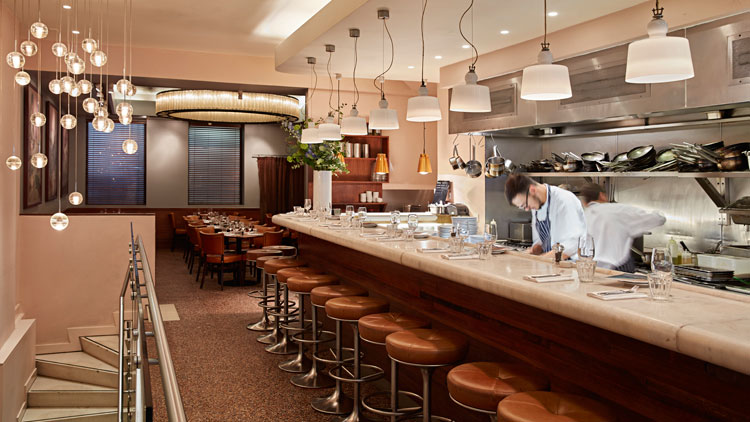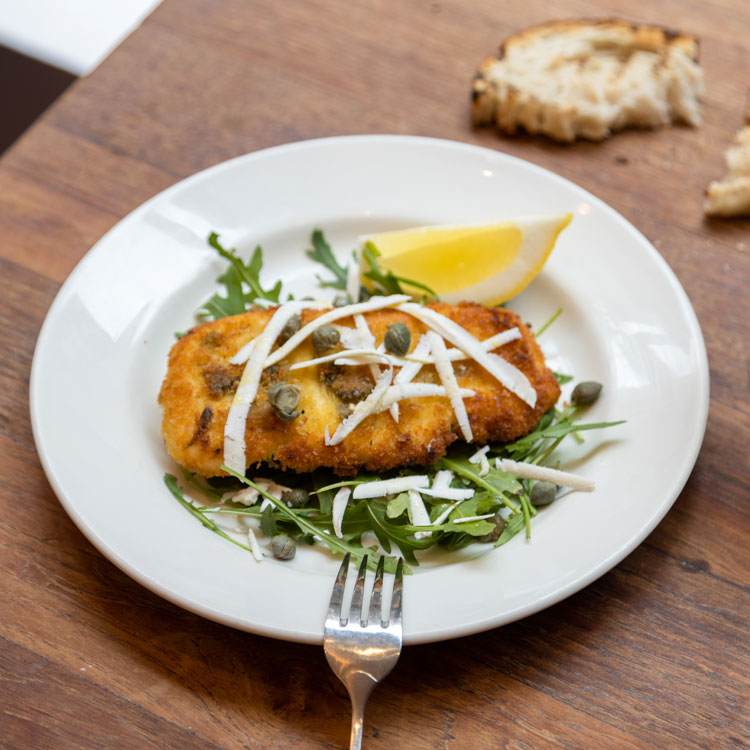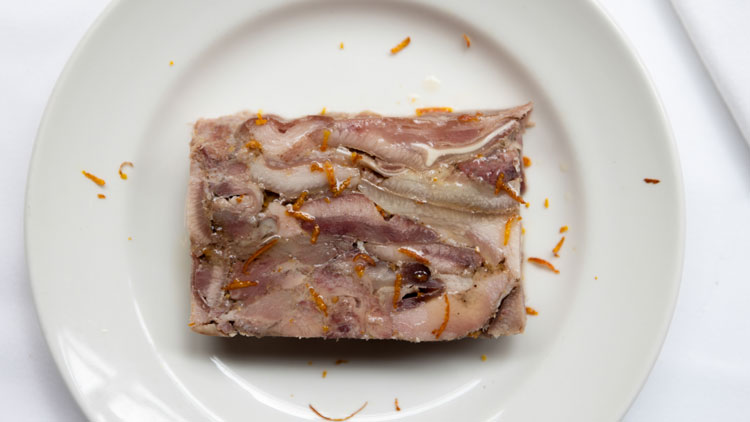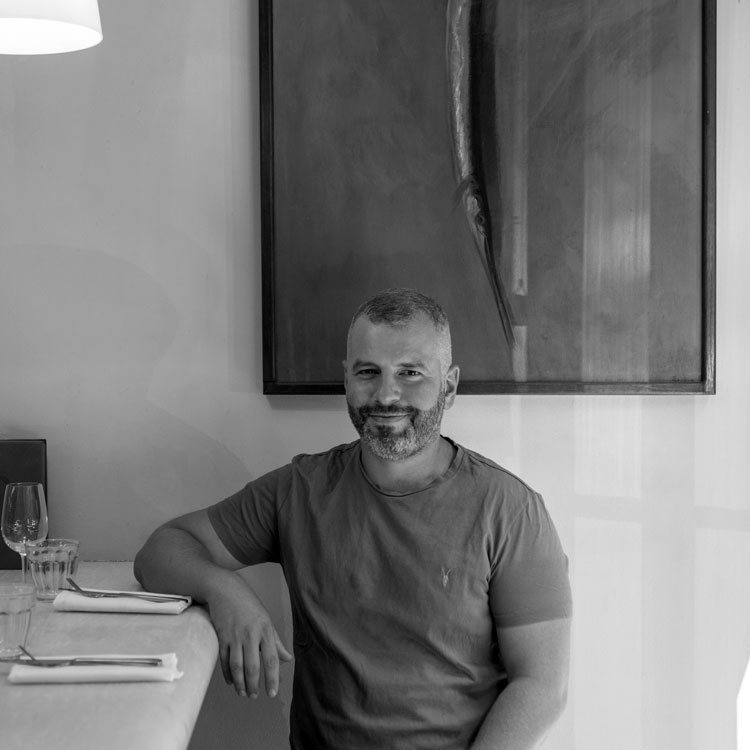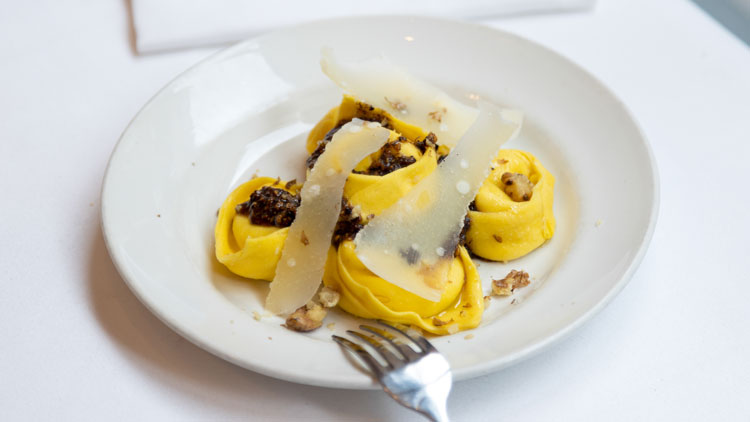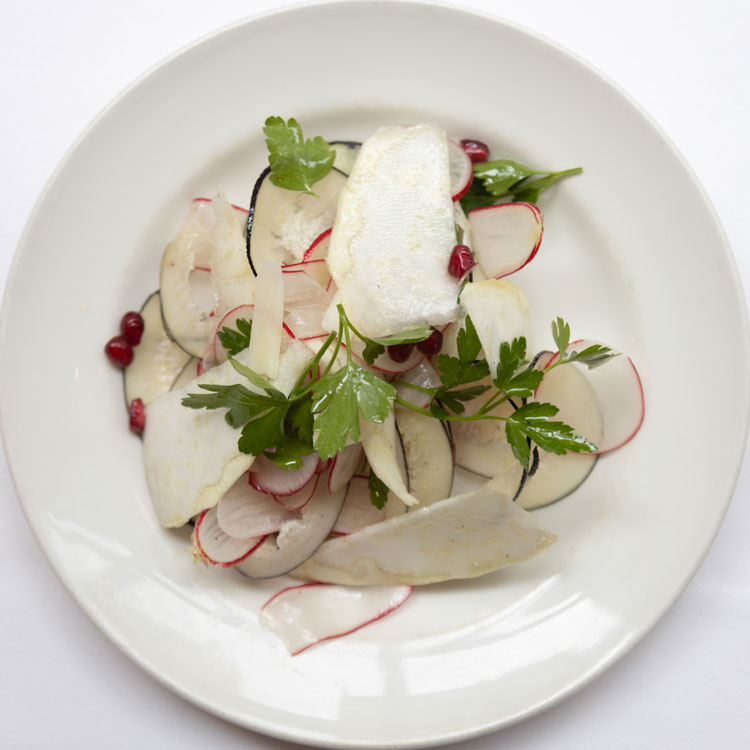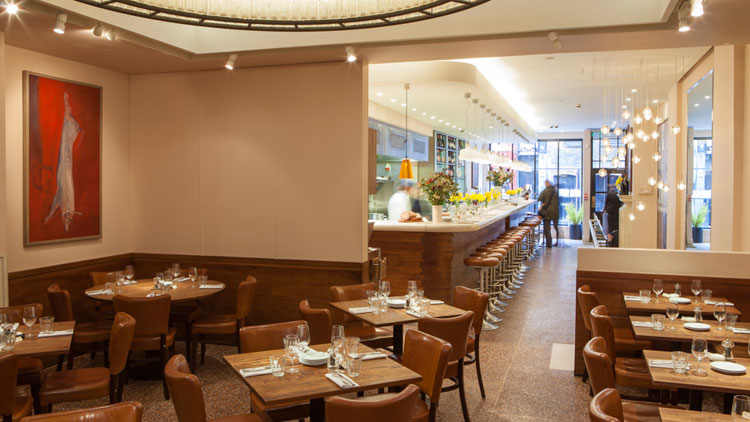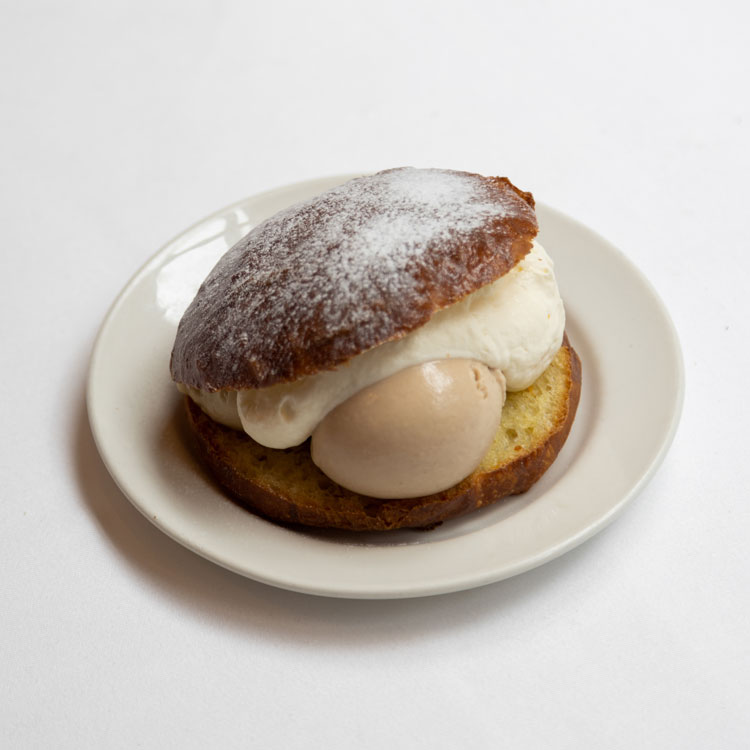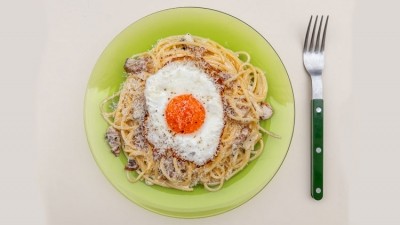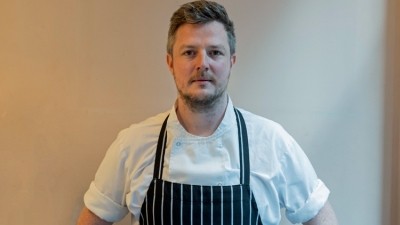Hungry like the wolf: Jacob Kenedy on 15 years of Bocca di Lupo
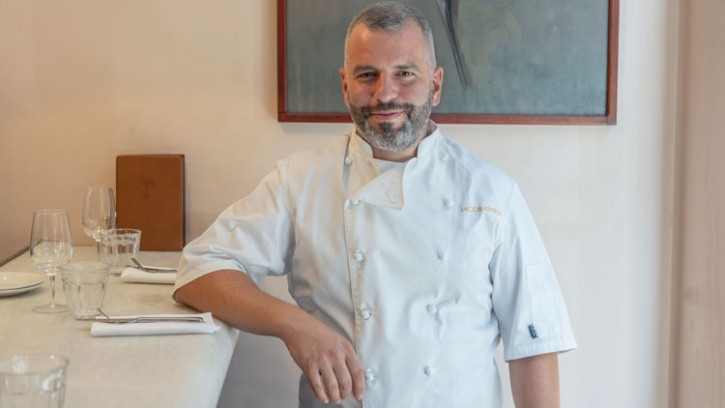
In Restaurant’s opening piece on Bocca di Lupo back in 2008 we said the restaurant was located “in what can generously be described as the arse-end of Soho”. Fifteen years later, this seems a little unfair. Connecting Great Windmill Street and Rupert Street in the part of Soho that abuts Piccadilly Circus, Archer Street might still be a backwater, but it’s hardly a dodgy pitch.
I sit down to lunch with the Italian restaurant’s chef and owner Jacob Kenedy ready to apologise on behalf of the publication. But it turns out I need not have worried. “I think we called it the armpit of Soho, but arse-end was probably more accurate,” he laughs. "This street has changed a bit. During our building works I cleaned up human shit from behind our hoarding. “In our first week of trading, when all the food glitterati came, I can’t remember if it was Fay Maschler or Giles Coren that had to step over a person passed out on our doorstep, with a syringe in their arm”
Maschler loved the place, as did The Observer’s Jay Rayner. On top of some extremely solid Italian cooking, Bocca di Lupo’s two key innovations were its adventurous and strictly regional approach to Italian cuisine and its flexible menu design. It might not sound like a big deal now, but in 2008 a menu that gave the diner full control over how much they ordered and in what sequence it came was a breath of fresh air.
“The key to our success was not thinking at all about what the market wanted. We created something that we liked and did it well”
This approach has been replicated – with varying degrees of success – across the industry. As such, Bocca di Lupo is at least partly responsible for the small plates revolution that has turned the way many restaurants serve food and run their kitchens on its head.
“The key to our success was not thinking at all about what the market wanted. We created something that we liked and did it well,” says Kenedy, who founded Bocca di Lupo with his then partner Victor Hugo.
“We wanted to give some of the joy that comes from travelling around Italy,” he continues. “I hope people now see Bocca as an institution. Some years have been better than others, but I don’t think we have had any strong periods of decline yet.”
Does it feel like 15 years? Yes and no. "It’s a bit like becoming a parent,” says Kenedy, who lives in London with his husband David and their four-year-old son Dylan. “It’s such a big thing that you can't remember life before. It seems like it's always been there. But it's also so momentous that it feels like it happened yesterday. I remember opening Bocca di Lupo very clearly, but I haven't a clue what happened in my life beforehand."
A journey through Italy’s regions
Divided largely into preparation methods including fried, raw and cured, and pot and pan, Bocca di Lupo’s menu reads a little like a wine list in that each dish is marked with its region of origin. These range from well-known sources of delicious Italian food to off the beaten track regions such as Trentino and Abruzzo.
While there are some familiar items, the bulk of the menu is made up of dishes most diners won’t have come across before. The current selection includes grilled buristo (blood salame) and marinated peppers from Tuscany; cream of red prawn risotto from Liguria; and Roman-style tripe with guanciale, tomato and pecorino.
“I’m a bit impish. If something starts selling too much, I take it off the menu for a little bit,” Kenedy says. “People like this restaurant because we serve things that are a little different. But when they return, they have a tendency to order the dishes they have already tried.”
Dishes are rotated in and out according to the seasons with the menu changing each day to reflect what produce is available. In the warmer months, there is a slight bias towards the sunshine and olive oil driven food of the south. As the nights draw in, the scales tip in the favour of hearty Northern Italian dishes.
The food is served from an open kitchen with a handsome Carrara marble counter that seats 21 (counter dining was another thing that Bocca di Lupo was ahead of the curve on). To the rear of the restaurant is a marginally more formal dining room that seats a further 55 covers. The ground-floor kitchen is supported by a subterranean prep kitchen that doubles as a service kitchen for the restaurant’s private dining room, which is also at basement level. With its distinctive red brick frontage, the space has an intentionally timeless look that has changed little since the restaurant launched.
A taste for the good stuff
Kenedy has a strong family connection to Italy but is not of Italian descent, although many people assume he is. His mother was born in Los Angeles but grew up near Rome with Italian as one of her mother tongues. Born and raised in London, he was exposed to restaurants from a young age and soon realised he had quite the taste for the good things on the menu.
“I recently discovered that my parents were actually quite frugal in their menu choices. But they never stopped me ordering whatever I wanted. I remember having things like sweetbreads, lobster and foie gras. I grew up enjoying restaurants.”
Kenedy is something of a polymath. He read human biology at Cambridge and managed to fit in successful stints as a DJ, a percussionist and a glassblower (at one point he had a contract lined up to supply The Conran Shop). He fell into cooking during his college and university years, alternating between Sam and Sam Clark’s celebrated Clerkenwell restaurant Moro and chef Nancy Oakes’ Michelin-starred Boulevard in San Francisco. After about a decade of working for other people Kenedy looked to open a place of his own with Hugo.
The pair came close to opening a restaurant in California for Oakes, but the site fell through at the last minute. Upon returning to the UK, they helped chef Oliver Rowe – another Moro alumnus – launch Konstam in King’s Cross, which infamously attempted to source the bulk of its ingredients from within the M25 (the restaurant launched in 2006 but closed about four years later).
“That year in Italy blew my mind. I went there thinking there was such a thing as Italian cuisine. But that illusion was shattered”
Bocca di Lupo was not the first restaurant idea Kenedy had. Concepts that nearly became reality include a farm-to-table restaurant and – at the other end of the spectrum – a chain of “really dirty” late-night taquerias. The blueprint for Bocca di Lupo started to reveal itself over the course of a year spent travelling around Italy “for fun and romance” with Hugo, who is no longer operationally involved in the business but remains an owner.
“That year in Italy blew my mind. I went there thinking there was such a thing as Italian cuisine. But that illusion was shattered. There are at least 20 (one for each of the country’s a regions). What I enjoyed most in Italy was the food from trattorias that wasn’t cooked by a named chef but that was very much of the place. I just thought ‘let’s make that restaurant here’.”
Kenedy and Hugo funded Bocca di Lupo with investment from family and by taking on a fair bit of debt. The restaurant opened amid the 2008 financial crash. While that might sound like poor timing, it was rather helpful.
“It was a good time to open something that felt fresh,” Kenedy says. “A lot of restaurants were closing, and people were desperate for something positive. We got a lot of media attention and a lot of good will early on.”
Another aiding factor was that Bocca di Lupo opened at a time when Soho was being reappraised by restaurateurs and diners alike. Other influential restaurants including Barrafina, Arbutus and Barshu had all opened in the area recently and were also offering something that felt contemporary.
“It felt like somewhere with a strong culinary heritage that had been forgotten. We got a good deal on the site. It was important to me that we took on a space that hadn’t already traded as a restaurant because we wanted to do something completely new.”
Bocca di Lupo’s name translates as ‘mouth of wolf’, taken from the saying ‘in bocca al lupo’, which is a bit like ‘break a leg' in Italian. "It felt a bit foodie and also a bit dark, which was good because we planned to explore a slightly darker side of Italian cuisine with more obscure dishes and offal.” However, it also felt a bit strange starting a restaurant name with the word 'in', so Kenedy chopped the it off the beginning.
Thinking small
There were a few different factors behind Kenedy’s decision to write his menus in such an unusual way. Primarily, he liked the idea of diners being able to have any dish they wanted at any point in the meal. In contrast to many of the small plates restaurants that followed, at Bocca di Lupo each table’s menu is carefully paced with staff working out – usually in consultation with the person ordering – the ideal order for each item to arrive.
This approach also addresses the problem of main courses in Italian restaurants in the UK. With very few exceptions, if you order a meat or fish dish in Italy, you get a piece of fish and meat on the plate and not much else.
“I found it impossible to create main courses that were acceptable to me on a conventional menu because when UK diners order a main course, they want more than a single piece of protein. Taking away main courses and offering most of the menu in either small or large portions solved that problem.”
Finally, he also wanted to offer a range of price points. “I liked the idea of people being able to come in and have a very nice and rather expensive meal, perhaps with some Barolo and truffle. But I also wanted the restaurant to be accessible to people that wanted a working lunch or quick dinner, or those with less money.”
The average spend per head at dinner is £50 including wine, but there will always be a few people that spend £20 and a good number of people that spend more than £120.
A culinary magpie
Kenedy may not be Italian, but he undoubtedly runs one of London’s most ‘authentic’ Italian restaurants. It’s a cliché, but for evidence of this one must only observe the disproportionate number of Italians that patronise the restaurant. He is a little conflicted about the use of the term, however.
"It's easier for me to cook Abruzzese food than it is for a Sicilian. I'm an outsider. I have a less bias perspective and perhaps a bit more of a bird's-eye view”
“I try and cook an Abruzzese dish like an Abruzzese would if they were cooking in London with the ingredients that are available here,” he says. “But that approach is inherently inauthentic because I am aping someone. By definition, I am faking it.”
Counterintuitively but almost certainly correctly, he believes that not being an Italian has its advantages. "It's easier for me to cook Abruzzese food than it is for a Sicilian. I'm an outsider. I have a less biased perspective and perhaps a bit more of a bird's-eye view. I often describe myself as a bit of a magpie. I go to Italy, eat something nice and nick it.”
For the most part, dishes are faithful recreations of traditional Italian dishes. That's not to say Kenedy doesn’t make the odd adjustment, but his aim is to preserve the soul of the dish. For example, the cannoli at Bocca di Lupo contain far less sugar than those found in Sicily. “There is a perspective. My dishes are often less elaborate and more pared back.”
There is also the odd dish that is simply made up, including orecchiette with ‘nduja and red onion and Kenedy’s famed salad of radish and celeriac with pomegranate, pecorino and truffle oil. Dishes that fall into this category are marked with a 21st region, 'BDL'.
In general, Kenedy does not shy away from more obvious dishes that are part of the UK Italian restaurant canon and staples in people’s home. He makes spaghetti with tomato sauce and carbonara, although the latter isn’t as regularly seen on the menu as the less obvious but as good (perhaps better) Amatriciana and gricia, which are in the same family of Roman pasta dishes. The one dish he tends to avoid, however, is tiramisu. "People love it and it’s everywhere. I can’t surprise people with it. I can surprise people with a great tomato sauce.”
Team wolf
Unsurprisingly given the length of time the restaurant has been open, none of the original opening team remain but a number of staff have been there from nearly the beginning including head of events and reservations Rosie Richardson, kitchen team member Luigi del Giudice and leader of the kitchen porter team Valdir Aves.
The restaurant’s senior team includes managing director Jake Simpson (currently also acting head chef), sommelier and wine buyer Phill Morgan, and general manager Katia Bertoldi.
Some people have also left and come back. "There is not greater compliment than that. It’s also very useful because they return knowing what you are about but also bring some new things they have learned with them.”
About half of the Bocca di Lupo team used to be Italian but it’s now more like 30%. “Brexit made them feel unwelcome but most stayed. When Covid came they were quick to leave. Some that had the right to remain have now returned.”
Kenedy does not go out of his way to hire Italians. It happens organically because the complexity of the menu requires waiters with experience and Italians are also drawn to the restaurant because they are interested in the cuisine.
A treasure trove of Italian wine
Kenedy is a vinous magpie as well as a culinary one. His aim is to list the best and most typical example of pretty much every style of wine worth drinking in Italy. In a country in which grapevines grow everywhere – there is virtually no part of Italy that doesn’t produce wine – and has over 500 officially-identified grape varieties that is an extremely tough brief.
“We don't have all of them, of course,” he says. “The goal is to have one of every Italian wine I have heard of on the list and for that example to define the style or region.”
Bocca di Lupo’s singular approach to wine has resulted in one of London’s greatest – and most accessible – Italian wine lists. Running to around 250 listings, the selection is overseen by Kenedy and Morgan.
The restaurant works with around 25 different suppliers (some wines are exclusive to the restaurant). Once a wine is identified, each supplier is asked to provide samples and a single wine is chosen.
Neither Kenedy nor Morgan are particularly concerned with what doctrine each of their winemakers follows so long as the wine is good. “Wines earn their place on the list by being brilliant,” Kenedy says. “Minimal intervention winemaking can often be used as an excuse for extremely bad winemaking. There are things that just taste fetid, and they don't come anywhere near these premises.”
The list is notably good value. Until quite recently, the entry level price for still wine was just £22. The cheapest wine is now £29. "It’s getting harder and harder to get good wines at that price point. I take a similar approach to the wine pricing at Bocca as I do the food in that I want there to be things that are affordable.”
To achieve this, Kenedy lowers his gross profit margin at the bottom of the list. The majority of Bocca di Lupo’s wines are priced between £30 and £45 and earn the most GP but after that the margin drops “quite aggressively” to make the restaurant’s more premium wines more inviting.
“I have a formula on an Excel workbook that only I seem to understand. While we distort the GP at either end of the list, the list price is always determined by what we pay for the wine. This gives suppliers an incentive to give us better prices because that will result in more sales. As far as I know, nobody sells the wines we list any cheaper.”
A nice little earner
Bocca di Lupo has been consistently busy since its inception, in fact the only bit of the restaurant that has grown since its launch is its private dining business, which averages about eight bookings a week. “Our average spend has tracked in line with inflation, which is surprising as our prices haven't. We use very nice ingredients, which have suffered less inflation than not so nice ones,” Kenedy says. “It is yet another case of the poor bearing the brunt.”
Cover numbers are pretty much exactly where they were pre-pandemic, but the pattern is different. Unlike most restaurants, lunchtimes covers are up, by about 30%, but post-theatre is down.
“Soho feels a bit quieter late at night. Some restaurants have suffered due to flexible working but I think we might have benefitted from it. We do fewer working lunches where people are in a rush but more long lunches.”
Kenedy has launched two other ventures off the back of Bocca di Lupo's success (well, three if you count his short-lived Italian street food restaurant Vico, which was located about five minutes’ walk away from his flagship on Cambridge Circus). The first is a spin-off of sorts, a gelateria just across the road from Bocca di Lupo that launched in 2010.
Gelupo offers a seasonal selection of gelatos and sorbets made fresh each day using top quality produce alongside coffee and a handful of house-made pastries. Gelupo’s gelatos and sorbets – which currently include mint stracciatella, pumpkin and amaretti and uva fregola (strawberry grape) - are available for delivery within seven miles of W1 and can also be found at Oren Delicatessen in Hackney.
The ice cream game has proved a tough nut to crack. On top of the climatic challenges faced by other ice cream purveyors on these shores, Archer Street has very little in the way of passing trade and prices are (necessarily) on the high side due to Kenedy’s insistence on using generous amounts of high-quality ingredients (his peerless blood orange sorbet has nothing in it but blood oranges and a little sugar, for example).
“I love the place and I'm very glad I did it. But it has taken a lot of effort over many years to get it right. It’s still not a wildly profitable business, but it brings a lot of joy to a lot of people,” says Kenedy, whose only paid work in Italy was working with a master gelataio in Bologna.
Bringing a taste of Louisiana to London
His second venture has no relation to Bocca di Lupo and is run under a separate business. On the stretch of Regent’s Canal that runs through Islington (it’s only a few minutes from Angel tube), Plaquemine Lock is a pub that serves Cajun and Creole food – think crawfish boils, po’boys and gumbo.
“My maternal grandmother was from Louisiana,” he explains. “I went there in my twenties and feel in love with the place. Soon after Bocca launched I thought it would be nice to do something Louisianian in London. I initially wanted to open a more high-end place, but another road led me to buying a pub.”
“I love working on new concepts that someone else then has the dubious pleasure of having to run. It is a way of dealing with certain urges that I have in a non-damaging way”
On top of all this, he has published three cookbooks and has a side hustle in restaurant consulting with past clients including the Mexican Embassy and Royal Opera House. He is currently working on an overseas project, but is not yet allowed to talk about it. “I love working on new concepts that someone else then has the dubious pleasure of having to run. It is a way of dealing with certain urges that I have in a non-damaging way.”
Has he ever felt the urge to launch another Bocca di Lupo? Don’t hold your breath. “We had a lot of offers in the early years because we were a hot young thing. I have never really considered it because I love this place too much. And it is not easily replicable. If I did another one it would not be as good as this one, and this one would probably not be as good either.”
I raise the question of legacy delicately – Kenedy is, after all, only 43 – but he’s more than happy to talk about it. Indeed, it’s something that was on his mind as the restaurant opened all those years ago. “The aspiration was that I hoped it would still be here when I was dead. God knows if it will be. But I would like it to live on.
"Every year has felt like a milestone. Margins are so slim in this business. You’re always not many percentage points away from death. Restaurant birthdays are like actual birthdays. It's a privilege to still be here."
